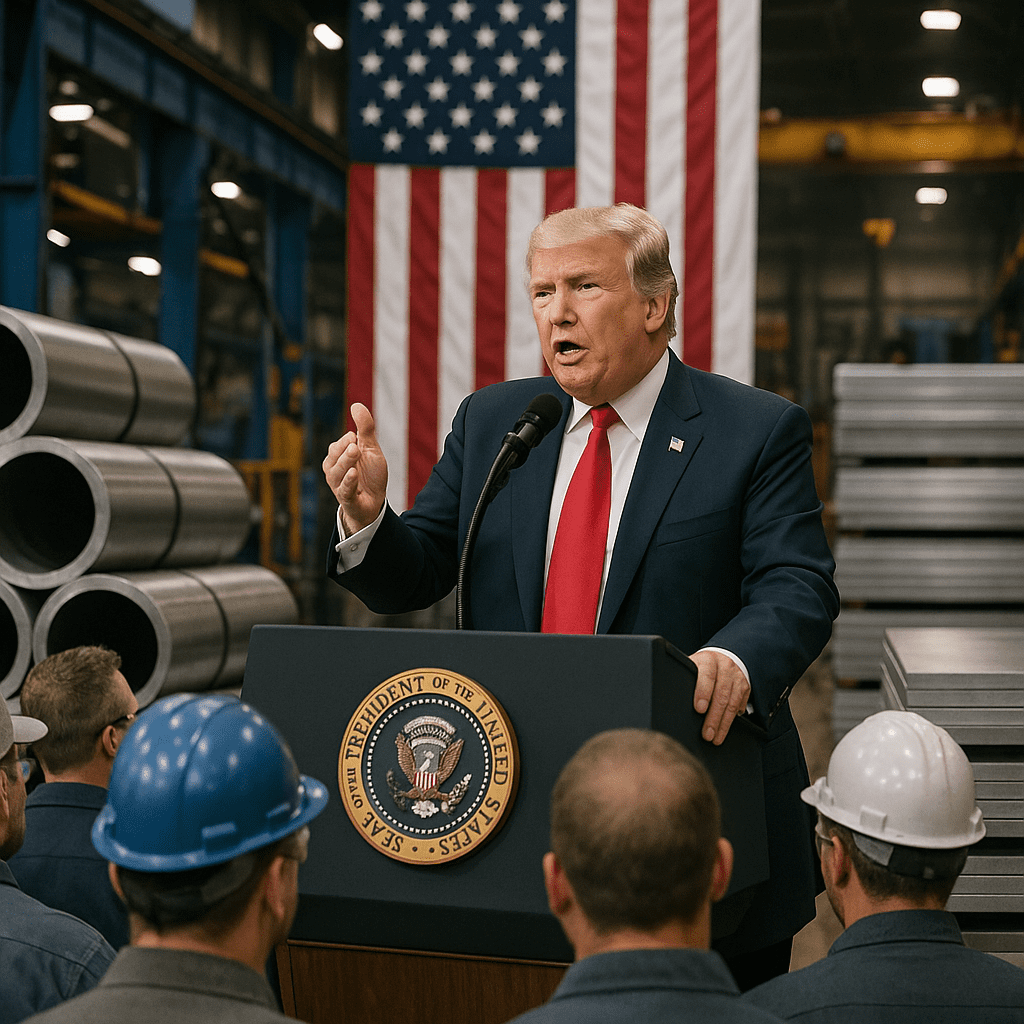President Donald J. Trump has taken decisive action to bolster the American manufacturing sector by reinstating and expanding tariffs on steel and aluminum imports. This policy aims to protect domestic industries from unfair foreign competition and to promote national security.
The administration has restored a 25% tariff on steel imports and increased the tariff on aluminum imports to 25%. These measures are designed to shield critical American industries from global excess capacity and unfair trade practices. The Steel Manufacturers Association and the Aluminum Association have expressed support for these tariffs, highlighting their potential to revitalize domestic production.
In addition to reinstating tariffs, the administration has eliminated previous exemptions and alternative agreements. Countries such as Canada, Mexico, and the European Union, which had received exemptions, are now subject to the full tariffs. This uniform application ensures a level playing field for all trading partners.
The administration has also implemented strict “melted and poured” standards to ensure that steel and aluminum products are genuinely produced in the countries from which they are exported. This measure aims to prevent circumvention of tariffs through transshipment.
While these tariffs are intended to protect domestic industries, they have led to increased production costs for manufacturers that rely on imported steel and aluminum. Industries such as automotive, construction, and machinery manufacturing have reported higher input costs, which may be passed on to consumers.
Retaliatory tariffs from affected countries have also impacted American exporters. For example, Canada and Mexico have imposed tariffs on U.S. goods in response to the U.S. tariffs. These actions have introduced complexities for American businesses operating in international markets.
The administration acknowledges that the implementation of these tariffs may require adjustments and refinements. Efforts are underway to monitor the impact on various sectors and to address any unintended consequences. The goal remains to strengthen American manufacturing and to ensure fair trade practices.
As the policy continues to unfold, it is expected that further measures will be taken to support domestic industries and to mitigate any negative effects. The administration remains committed to protecting American workers and to promoting economic growth through strategic trade policies.
—
Tom Blake writes on markets, trade policy, and the government’s role in private enterprise. He studied economics at George Mason University and spent six years as a policy advisor for a business coalition before turning to financial journalism. His work examines the real-world impact of regulations, subsidies, and federal economic planning.



